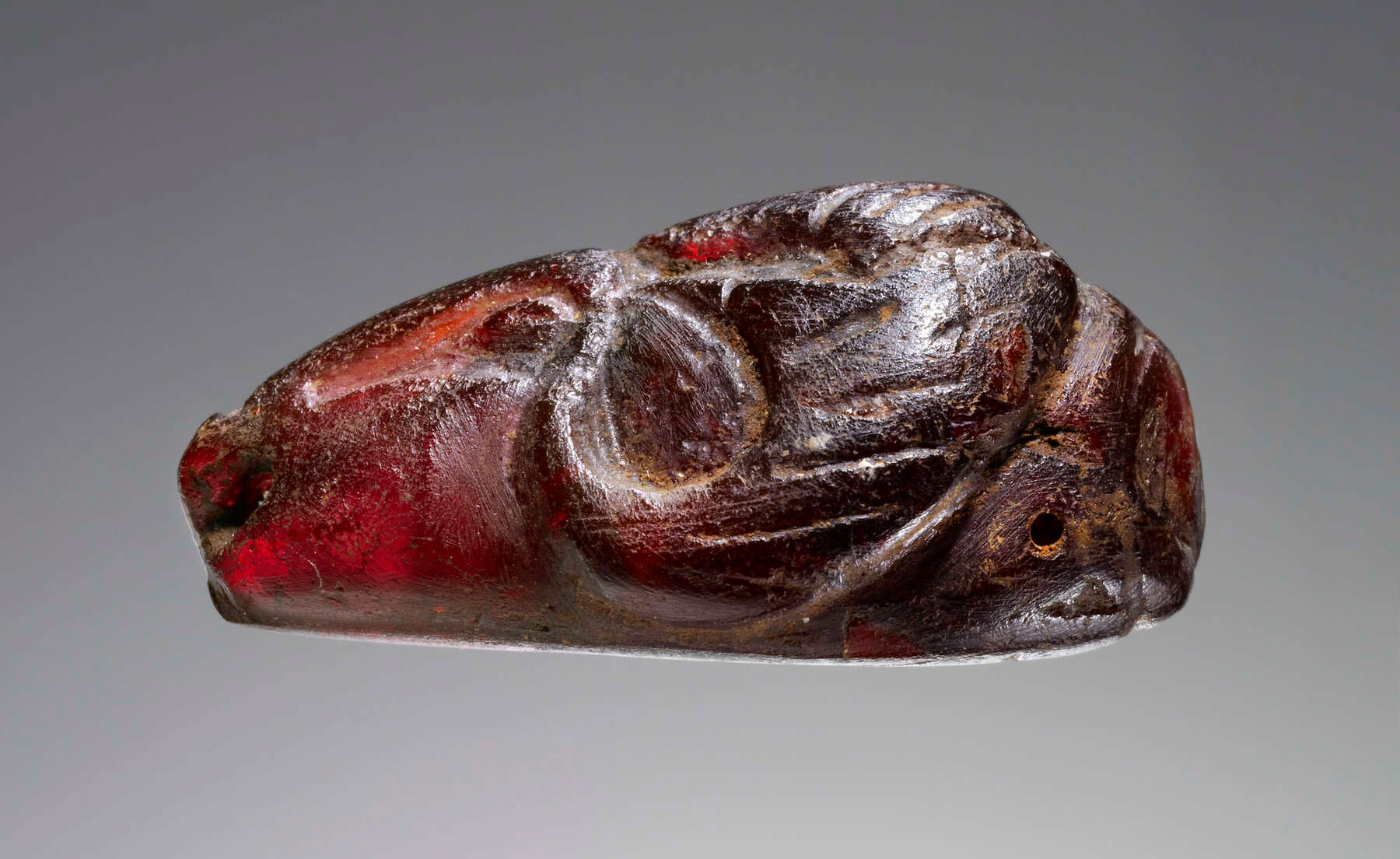52. Finial(?): Ram’s Head
| Accession Number | 77.AO.81.12 |
| Culture | Italic |
| Date | 500–400 B.C. |
| Dimensions | Length: 41 mm; width: 27 mm; depth: 29 mm; Weight: 11.1 g |
| Subjects | Jewelry; Ram |
Provenance
–1977, Gordon McLendon (Dallas, TX), donated to the J. Paul Getty Museum, 1977.
Condition
The pendant is intact and in good condition, although the surface is worn, as if from handling. The surface of the amber appears to be crazed, and fissures are visible on the underside of the pendant. There is a small chip loss to the lower edge of the nose, and a shallow fissure runs partially across the back. Numerous small scratches mar the surface and may be the result of heavy polishing. The pendant appears to have been treated with amber oil. In ambient light, the amber is red-brown. Some slight subsurface cracking is visible and the piece is bright red in transmitted light. Many inclusions are present.
Description
This ram is schematically rendered in comparison to most of the other ram pendants in the Getty collection. It has a broad, semicircular nose and a very low forehead. The muzzle is long and rounded. The horns divide into broad, flat volutes; the ridges on the horns are indicated by five deep and widely spaced horizontal incisions. The ears are represented by sunken amygdaloidal cavities beneath the horns near the top of the head rather than at the sides. A deep incision over the eye and an equally deep incision over the cheek are devices that serve to raise the eye away from the plane of the face. On the back is an oval raised section of amber delineated with five grooves (perhaps a pseudo-suspension finial).
There is wearing on the prominent surfaces, but the marks of a graver remain on the cheeks, throat, and chin. The grooves on the back appear to have been made by a sawlike rasping with a straight edge. There are two perforations through the pendant, either of which may have been used for suspension. A small bore, 1 mm in diameter, passes laterally through the pendant at the base of the head; the nostrils are perforated with a 2 mm bore.
Discussion
This ram has no parallel known to me for the morphology of the animal or the style. I also know of no other pseudo-suspension finial. The pendant is of considerable size, one of the largest known, and is comparable to the two largest pendants from the sixth-century B.C. Braida di Vaglio Tomb 102.1 Two unusual aspects of this pendant are its two sets of holes and the wear on its prominent areas. It is also the only example that has a perforation through the nose. This pendant may have been used at some time as a finial for a necklace, since it is not uncommon for finial heads to meet nose to nose in ancient gold jewelry.
Notes
Bibliography
- Bottini and Setari 2003
- Bottini, A., and E. Setari. La necropoli italica di Braida di Vaglio in Basilicata: Materiali dallo scavo del 1994. With appendix by M. Torelli. 60, serie miscellanea 7. Rome, 2003.
